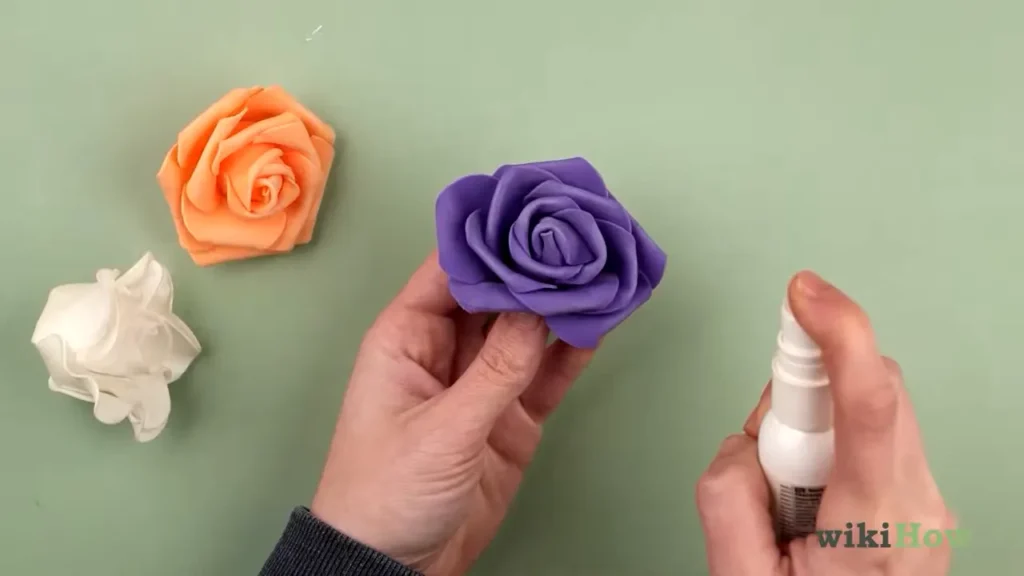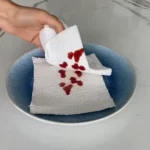Fake flowers, a staple in home decor and special events, have evolved from mere imitations to stunningly realistic representations of natural flora. They offer a lasting beauty, free from the transient nature of real blooms, and have become a popular choice for those seeking a touch of elegance without the maintenance. However, like all decorative items, they accumulate dust and require cleaning to maintain their allure.
Can you wash fake flowers in the washing machine? The short answer is: it depends. The suitability of using a washing machine for cleaning artificial flowers hinges on various factors, such as the materials used in their construction and the design of the flowers. While some types can endure a gentle cycle, others might get damaged.
Artificial flowers, composed of fabrics like silk, cotton, or polyester, and sometimes plastic or latex, vary in their resistance to water and mechanical agitation. The intricate designs and delicate nature of some fake flowers also play a crucial role in determining the appropriate cleaning method. It’s essential to assess these aspects to decide whether the washing machine is a safe option or if alternative cleaning methods are advisable.
Debunking Common Myths About Cleaning Artificial Flora
Artificial flowers have become a mainstay in modern decor, but misconceptions about their care and maintenance abound. One prevalent myth is that these faux beauties are maintenance-free. In reality, like all decorative items, they collect dust and require cleaning to maintain their vibrant appearance. Another widespread belief is that artificial flowers are fragile and challenging to clean. However, with the right approach, they can be cleaned effectively and safely, ensuring their longevity and appeal.
Fake Flowers: Materials and Types
Common Materials Used in Artificial Flowers
Artificial flowers are made from a variety of materials, each with its unique properties and cleaning requirements. The most common materials include:
– **Silk**: Known for its delicate texture and realistic appearance, silk flowers are a popular choice. However, they are also the most delicate and require gentle cleaning.
– **Polyester**: Durable and less expensive, polyester flowers can withstand more rigorous cleaning methods.
– **Plastic and Latex**: These materials are used for sturdier flowers and can often handle water exposure better than silk.
Different Types and Their Characteristics
Artificial flowers come in various forms, ranging from single stems to elaborate arrangements. The design of the flower also impacts its cleaning method. For instance, tightly arranged bouquets may trap more dust and require more detailed cleaning compared to single, open blooms.
Washing Machine: Friend or Foe?
Overview of Washing Machines and Their Mechanisms
Washing machines provide a convenient way to clean many household items, but are they suitable for artificial flowers? Understanding how a washing machine works – with its cycles of water and agitation – is key to determining if it’s a safe option for cleaning your faux flora.
Suitability for Different Types of Fabrics and Materials
The decision to use a washing machine largely depends on the material of the artificial flower. Robust materials like polyester and plastic might survive a gentle cycle, while silk and other delicate fabrics could be damaged.
Is it OK to put fake flowers in water?
Yes, it is generally okay to put fake flowers in water, but there are a few considerations to keep in mind:
1. **Material of the Flowers**: Some artificial flowers are made from materials that can withstand water without any damage, such as certain plastics or synthetic fabrics. However, others, like silk flowers, may not fare as well when submerged or exposed to water for extended periods. It’s essential to know the material of your fake flowers before deciding to place them in water.
2. **Colorfastness**: Some artificial flowers may have dyes that could bleed when placed in water. To test this, you can dampen a small, inconspicuous part of the flower with water and see if any color comes off.
3. **Long-term Exposure**: While placing fake flowers in water for short periods (like during an event) is usually fine, prolonged exposure to water can potentially lead to issues like discoloration, mold, or material breakdown, especially for flowers not designed for this purpose.
4. **Aesthetic Purpose**: From a decorative standpoint, placing artificial flowers in vases with water can add to their realism and enhance their visual appeal.
In summary, while it’s often safe to put fake flowers in water, it’s important to consider the material and quality of the flowers, along with the potential long-term effects of water exposure.
Cleaning Fake Flowers: Methods and Best Practices

Traditional Cleaning Techniques for Artificial Flowers
Traditional methods of cleaning artificial flowers include:
– **Dusting**: Regular dusting helps maintain their appearance and prevents buildup. Soft-bristled brushes or microfiber cloths are ideal for this.
– **Wiping**: A slightly damp cloth can be used to gently wipe the surfaces of sturdier materials.
– **Blowing**: Using a hairdryer on a cool setting can remove dust from hard-to-reach areas.
Pros and Cons of Using a Washing Machine
Using a washing machine can be a time-saving option for cleaning artificial flowers, but it comes with its set of pros and cons.
**Pros**:
– **Efficient Cleaning**: It can clean multiple flowers simultaneously, saving time and effort.
– **Thoroughness**: The machine’s cycle can reach areas that hand cleaning might miss.
**Cons**:
– **Risk of Damage**: Delicate flowers might get crushed or torn in the machine.
– **Water Exposure**: Some materials may not react well to water, leading to color bleeding or shape distortion.
Factors to Consider Before Using a Washing Machine
When it comes to cleaning fake flowers, the washing machine might seem like a convenient solution. However, before proceeding, it’s crucial to consider several factors to ensure the safety and preservation of your artificial flora.
Material and Durability of the Fake Flowers
The foremost consideration is the **material** of the fake flowers. Materials like **silk** are delicate and can be damaged by the agitation in a washing machine. On the other hand, more durable materials such as **polyester** or **plastic** can often withstand a gentle wash cycle.
Size and Design of the Artificial Arrangement
The **size and design** of the arrangement also play a significant role. Large arrangements or those with intricate designs might not fit properly in the washing machine or could become tangled, leading to damage.
Step-by-Step Guide: Washing Machine Method
Preparing the Flowers for the Wash
1. **Inspect** each flower for loose petals or leaves and secure any delicate parts.
2. **Remove** any detachable parts that might be damaged in the wash.
3. **Place** the flowers in a mesh laundry bag to protect them during the cycle.
Appropriate Settings and Detergents for Fake Flowers
– **Select a gentle cycle** with cold water to minimize stress on the flowers.
– **Use a mild detergent** – strong chemicals can harm delicate fabrics.
– **Avoid using fabric softeners**, as they can leave a residue on the petals.
Alternative Cleaning Techniques

Hand Washing: Techniques and Tips
For those who prefer a more delicate approach or have extremely fragile flowers, hand washing is a suitable alternative.
– **Fill a basin** with cold water and add a small amount of mild detergent.
– **Gently agitate** the water and carefully clean the flowers.
– **Rinse** thoroughly with cold water to remove any soap residue.
– **Air dry** the flowers by laying them on a clean, dry towel.
Dry Cleaning: When and How to Use
Dry cleaning is another method, particularly beneficial for materials that should not be exposed to water.
– **Use a dry cleaning kit** specifically designed for delicate fabrics.
– **Follow the instructions** carefully to avoid any damage.
Special Care for Delicate Flowers
Handling Fragile Materials and Intricate Designs
Delicate materials like silk require special attention. Be gentle during cleaning, and avoid any harsh rubbing or squeezing that could misshape or tear the fabric.
Preserving Color and Shape
– **Test for colorfastness** before cleaning by dabbing a small, inconspicuous area with a damp cloth.
– **Reshape** the flowers while they are still damp and allow them to dry naturally.
Risks and Precautions
When it comes to cleaning artificial flowers, it’s essential to be aware of the potential risks and take appropriate precautions to avoid damage. Understanding these risks can help you make informed decisions about the best methods for cleaning and maintaining your faux floral arrangements.
Potential Damages and How to Avoid Them
Artificial flowers can suffer various types of damage, depending on the cleaning method used. Common issues include:
– **Color Fading**: Exposure to harsh chemicals or prolonged soaking can lead to color fading. To prevent this, use gentle detergents and avoid soaking flowers for extended periods.
– **Shape Distortion**: Rough handling or excessive agitation during washing can cause flowers to lose their shape. Handle them gently and reshape them while damp if necessary.
– **Material Breakdown**: Some materials, especially delicate ones like silk, can deteriorate if exposed to water or vigorous cleaning. Stick to dusting or dry cleaning methods for these materials.
Signs You Shouldn’t Use a Washing Machine
Certain indicators suggest that a washing machine isn’t a suitable method for cleaning your artificial flowers. These include:
– **Material Sensitivity**: If the flowers are made from materials that are known to be water-sensitive, such as silk or paper.
– **Delicate Construction**: Flowers with intricate designs or delicate attachments that could be easily damaged.
– **Colorfastness Issues**: If the colors bleed when a damp cloth is applied, it’s likely they will fade in the wash.
Maintenance and Longevity
Proper maintenance is crucial for preserving the beauty and longevity of artificial flowers. Regular care can keep them looking fresh and vibrant for years.
Regular Maintenance Tips for Artificial Flowers
Maintaining artificial flowers involves more than just cleaning. Here are some tips to keep them looking their best:
– **Dust Regularly**: Use a soft brush or a hairdryer on a cool setting to gently remove dust.
– **Avoid Direct Sunlight**: Prolonged exposure to sunlight can cause colors to fade. Place them in areas where they aren’t exposed to harsh sunlight.
– **Keep Away from Moisture**: While some artificial flowers can handle minimal moisture, it’s generally best to keep them dry to avoid mold and mildew.
Storing and Preserving Fake Flowers for Long-Term Use
When not in use, artificial flowers should be stored properly to prevent damage. Follow these tips:
– **Clean Before Storing**: Ensure the flowers are clean and completely dry before storing.
– **Use Proper Containers**: Store them in boxes or wrapped in tissue paper to protect their shape.
– **Control the Environment**: Keep them in a cool, dry place away from direct sunlight and moisture.
Recap of the Do’s and Don’ts in Cleaning Fake Flowers
To ensure the best care for your artificial flowers, keep in mind these key points:
– **Do** choose the right cleaning method based on the material.
– **Do** handle them gently to avoid damaging their shape and color.
– **Don’t** use harsh chemicals or expose them to excessive water if they are made of delicate materials.
– **Don’t** neglect regular maintenance like dusting and proper storage.
Encouraging Regular Care for Long-Lasting Beauty
Caring for artificial flowers is not just about preserving their appearance; it’s about maintaining their charm and aesthetic value in your home. Regular, gentle cleaning and proper storage will help ensure that your faux floral arrangements continue to add beauty and elegance to your space for years to come. Remember, a little care goes a long way in keeping these everlasting blooms fresh and vibrant.
FAQs
Can All Types of Fake Flowers Be Washed in a Machine?
Not all fake flowers are suitable for machine washing. The material and construction of the flower determine its ability to withstand the process. Flowers made from sturdy fabrics like polyester might survive a gentle cycle, while delicate materials like silk should be carefully hand-washed or dusted.
What Settings Should I Use to Wash Fake Flowers in a Machine?
If you decide to wash fake flowers in a machine, use a gentle cycle with cold water. Avoid strong detergents and consider placing the flowers in a protective mesh bag. It’s crucial to choose settings that minimize mechanical stress on the flowers.
How Often Should Fake Flowers Be Cleaned?
The cleaning frequency for fake flowers depends on their exposure to dust and environmental factors. Generally, a thorough cleaning every three to six months is advisable, with regular light dusting in between.
Is It Safe to Dry Fake Flowers in a Dryer?
It is not recommended to dry fake flowers in a dryer. The heat and tumbling action can cause damage. Instead, gently shake off excess water and let them air dry.
Can I Use Other Methods to Clean My Fake Flowers?
Yes, there are several other methods to clean fake flowers, including gentle hand-washing, using a hairdryer on a cool setting, or wiping them with a damp cloth. For extremely delicate flowers, simple dusting might be the safest option.
Conclusion
To conclude, cleaning fake flowers is a delicate task that requires careful consideration of the materials and design of the flowers. While some may withstand the gentle cycle of a washing machine, others are better suited to hand washing or simple dusting. It’s essential to understand the nature of the artificial flowers in your care to choose the best cleaning method.
Regular maintenance plays a crucial role in preserving the beauty and longevity of fake flowers. By adopting appropriate cleaning techniques and handling them with care, you can ensure that these beautiful, everlasting blooms continue to enhance your space with their undimmed splendor.
In essence, the key to maintaining the allure of fake flowers lies in understanding their material composition and responding with suitable cleaning methods. Whether it’s a gentle machine wash or a simple dusting, the right approach can keep your artificial blooms looking fresh and vibrant for years to come.




